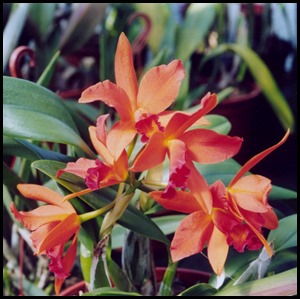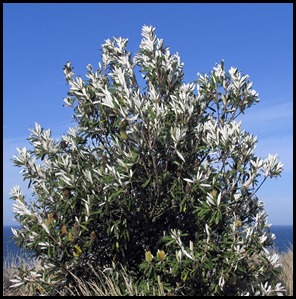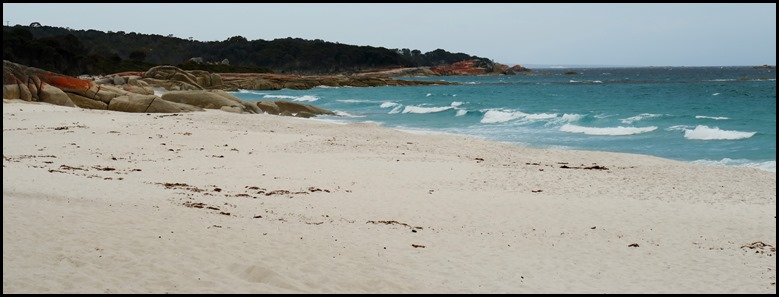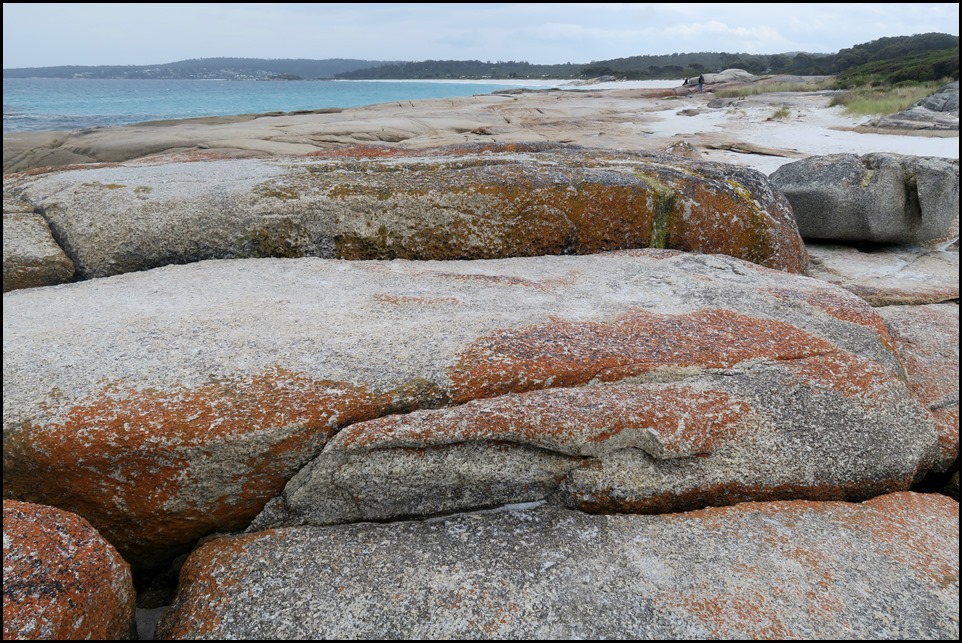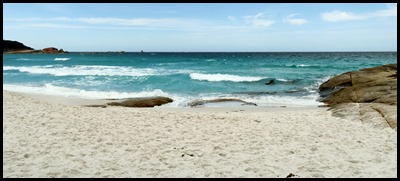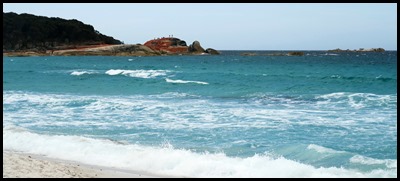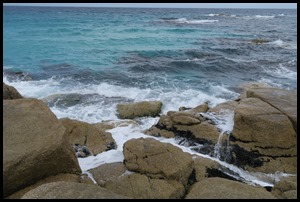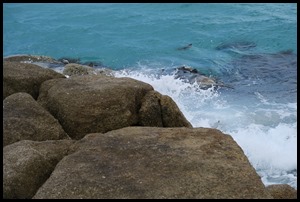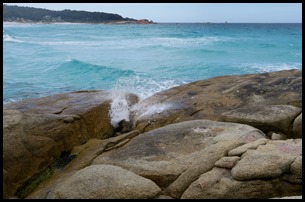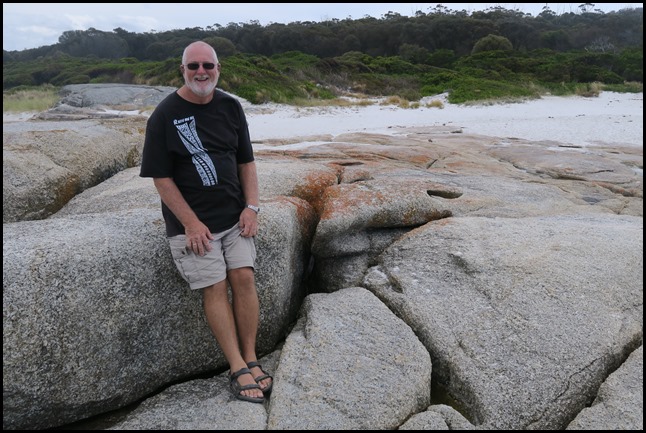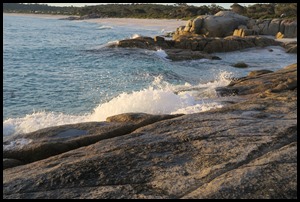To Cosy Corner

|
To Cosy Corner, Bay of
Fires
 Todays
journey took us straight up the east coast of Tasmania. Stops to see if
Bicheno Blowhole would perform and bimble about the huge, amazing coloured
boulders and then a lunch stop in Falmouth.
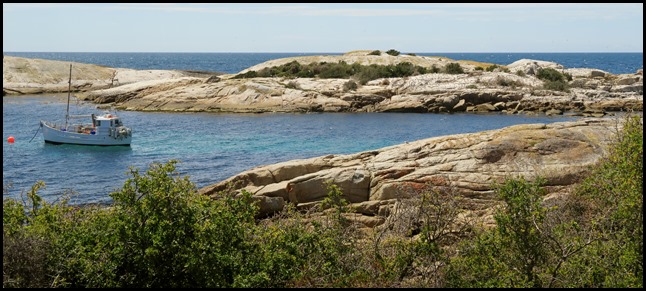 Leaving
Bicheno.
 The main road
took us a little way from the sea. We saw huge sand
dunes.
 The grass was so
parched that the odd green bush looked somehow quite false.
 Farmers who can are using sprinklers, the green against the surrounding area a stark
reminder of the incredible bushfire risk at the moment. Seventy are burning in
the northern areas, many completely out of control.
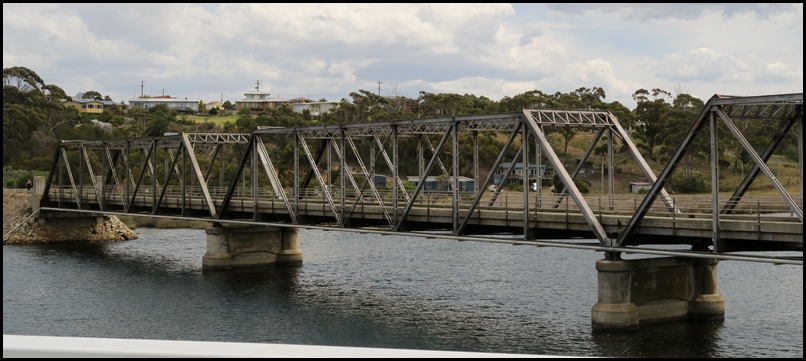 From our road bridge we drove past a
very handsome pedestrian bridge at
Scamander.
The first European to travel through the area was surveyor John Helder Wedge in 1825. He named the river "Borthwick" and the locality itself he named "Yarmouth" after the English port Great Yarmouth but both the river and town were both later renamed "Scamander". The wide river mouth has been a challenge to bridge builders for many years. Richard Terry constructed a timber bridge in 1865 but it later collapsed when a large mob of cattle was driven across it. A second and third bridge were successively washed away in floods in 1889 and 1911. Further bridges succumbed to flood and shipworms, the last timber bridge collapsing in 1929. A truss bridge was built in 1936 and still stands today, used by pedestrians and bicycles. The concrete bridge that currently carries the Tasman Highway was built on a better alignment nearby and officially opened on the 26th of June 1991.
We pulled in at a couple of freedom camps [Grants Lagoon, Jeanneret and Swimcart Beach] along the Bay of Fires, read the information boards but liked the feel of Cosy Corner – the name too. The Bay of Fires on Tasmania’s East Coast extends from Binalong Bay in the south to Eddystone Point in the north.
This unusual name was given to the area by Captain Tobias Furneaux, in 1773, when he noticed numerous fires along the coast. This led him to believe that the country was densely populated. Abundant evidence of this occupation by Aboriginal people can be seen along the coast today. A scenic view of the bay can be glimpsed by driving along the coast to The Gardens. This picturesque area was named by Lady Jane Franklin, the wife of Governor John Franklin, who spent some time in the region.
This area has become internationally famous for its vibrant orange rocks, startling blue water and long white beaches. The beautiful white sand can be attributed to the high quartz content of the granite boulders, and the bright orange rocks are covered by lichen. Lichens are two organisms in one: a mutually beneficial relationship [symbiosis] between a fungus and an alga. Repeated and regular burning of the land by the Aboriginal people, over many thousands of years, ensured the country was kept low and open, making it easier to move and hunt. Mosaic burning also encouraged fresh and diverse plant growth. This attracted kangaroos and other mammals as well as birds, which the Aboriginal people hunted. There is an on-going role of fire. The Parks and Wildlife Service Tasmania continues to use fire to manage the environment. The objective of vegetation management in reserves is to maintain a range of ages of plant communities as well as fire intervals. There is a delicate balance between burning enough – fires must be intense enough to stimulate flowering and germinating of plants yet frequent enough to prevent the dominance of tall shrub species in heathlands, but not so frequent that it will kill plant species that require time to reach flowering age and produce seed.
Coastal plants are known for being tough. However, small changes can have a profound effect on these wind-swept communities. One of the reasons why there are fences in campgrounds in the Bay of Fires Conservation Area is to minimise the huge impact that visitors can have on coastal vegetation, including the beautiful drooping sheoaks [Allocasuarina verticillata]. For years these sheoaks have provided shade and protection for locals and visitors who have enjoyed Swimcart Beach for surfing, camping and exploring. But damage to these trees could mean that eventually they disappear from the area altogether. Removing one sheoak can affect the whole group – the remaining trees become weaker and are more susceptible to strong winds. Fire orchids [Pyrorchis nigricans] also respond to fire. Silver banksia are reliant on fire for the next generation to survive: the banksia’s fruit only opens when fire comes through. If you look closely at the branches, one node of branch growth is roughly equal to one year. Cones that have opened give an indication of the time since the last fire. The Parks and Wildlife Service Tasmania uses fire to maintain the range of ages – from old silver banksias to young tea trees, all are important for biological diversity.
We settled Mabel in a gap in the trees, said hello to several groups of campers and went to the beach to explore.
Incredible scenery.
After our beach bimble we returned to Mabel for games and supper we went back out at sunset to watch the colours of the rocks change.
Lichens cannot grow near the waters edge but time gave us a little gentle wave watching.
As at Bicheno there was a variety of sizes of boulders, my beautiful assistant poses here at Cosy Corner.
My favourites. 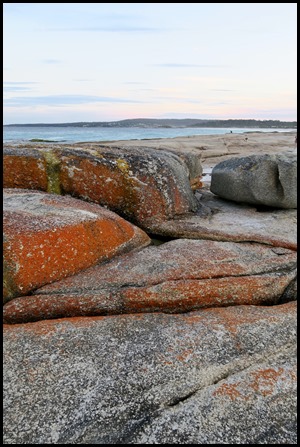 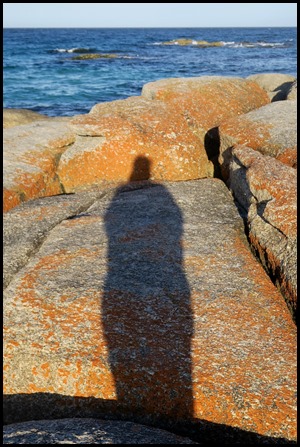 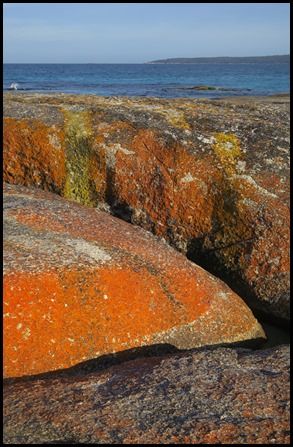 Sunset
colours.
 The
oranges.
 The pinks.
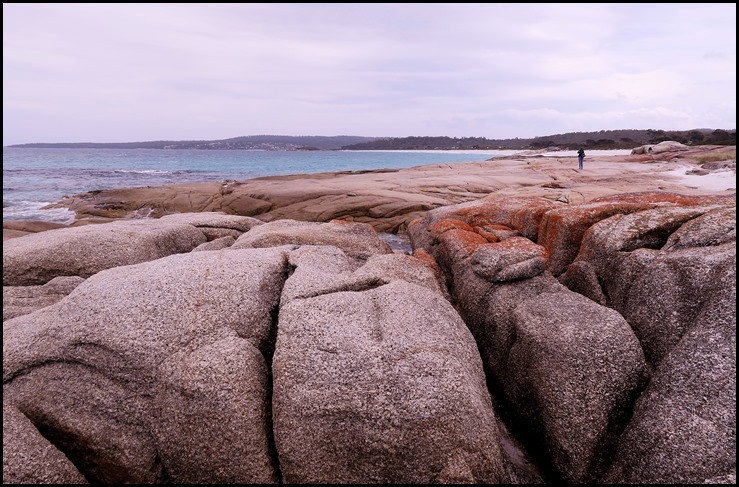 The
pinky-oranges.
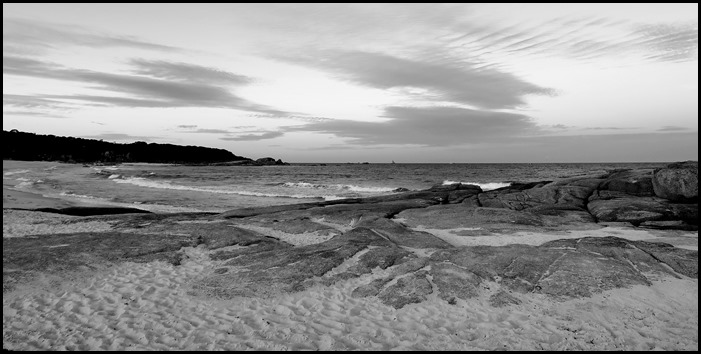 The black and
white.
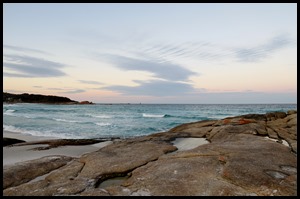   After an enjoyable time on the beach
at sunset, we walked through the
gap in the bushes and back to
Mabel.
ALL IN ALL A COLOURFUL DAY GREAT TOURIST DAY SEEING LOTS OF THINGS |




